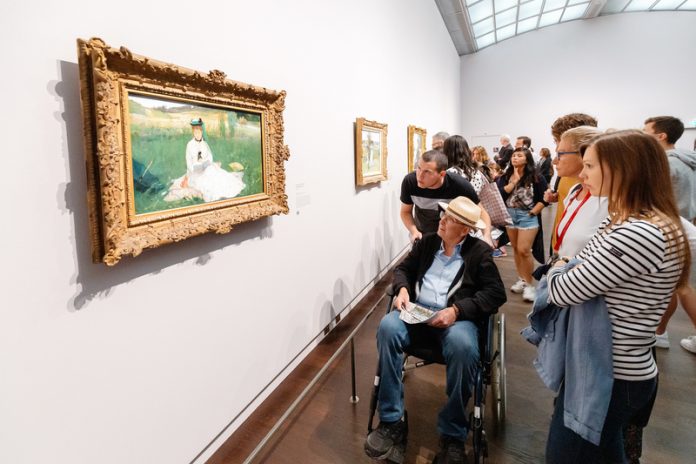Ian Streets from About Access discusses accessibility in museums and art galleries – including the accessibility of exhibits and interactivity
The importance of accessible exhibits can have a strong impact on how we view museums and art galleries. For many, museum memories from childhood will be of glass cases rather than the artefacts within them, of barriers made of rope or something more substantial, and of warning signs telling us not to touch.
These things are still around, but not as commonplace in this modern, interactive age as they used to be. Increasingly, visitors are encouraged to get their hands on history and the Arts Council includes accessibility to actual exhibits as a key recommendation in its Museum Accreditation guidance.
The practicalities of such a policy are not always straightforward, as demonstrated by some of our own work with consultation groups comprising people who have a range of impairments. The needs of someone who is deaf are not the same as the facilities required by someone who is blind or visually-impaired but the principles are the same – if someone can’t see or hear the things that make a museum interesting then you need to engage with them in another way.
A perfect example arose in our most recent consultation. A blind visitor to a museum we were studying couldn’t see the artefacts but they were as interested as anybody else because they could touch and smell the leather which was a feature of one exhibit.
Arts Council guidelines
The Arts Council’s guidelines maintain that for a museum to achieve its accreditation standard it needs, among other things, an approved access policy. That document should be informed by an access assessment and developed in consultation with users, which is the sort of work that we’ve been doing.
But the policy goes beyond the provision of ramps, lifts, audio loops, signage and the like because people understand that there’s no point improving access in and around a museum if, once people get in, they can’t see the things that attracted them in the first place.
Improve access to exhibits
The Arts Council guidance acknowledges the need to balance the care and management of collections against the provision of accessible environments, but it also leaves museum operators in no doubt of its desire to improve access to exhibits, with an expectation that access assessments will be updated at least every five years.
Our most recent group considered ideas including the design – height and angles – of the shelves on which some exhibits are placed, whether a drawer stool could be incorporated into a cabinet to enable people to step up to a better viewing position, whether more objects could be removed from glass cases so people could feel them.
The drawer stool was welcomed as a good idea, open for people to stand on it, closed to avoid presenting an obstacle for wheelchair-users. But it was recognised that if someone drops a piece of pottery which breaks on the floor, then all the museum visitors are presented with a different hazard. That brought us back to the view, expressed at most of our sessions, that it is essential to have museum attendants with knowledge of the building and its exhibits and with a good degree of disability confidence.
Guided tours and facilitated sessions are among the ideas suggested by the Arts Council, along with providing access to collections online, creating temporary exhibitions and taking collections on tour.
Heritage solutions
The solutions can be quite simple. A heritage property that we studied has a ground floor area that gives a degree of access but there are also exhibits on the first floor and adding a lift would be a challenge. There’s no information for people who can’t use the stairs to let them know what sort of items are up there and what the views are like from the large first-floor windows.
It shouldn’t be too difficult to resolve the issue by creating a video showing the things people might miss, in the same way, that a heritage industrial workshop which we visited could use film to show how tools and other equipment from a bygone age were used in production. People can pick up the items, and technology can add sights and sounds to bring history to life.
The key to tackle this kind of access dilemma is to increase the number and quality of opportunities for people to interact and engage with displays and individual artefacts. In making that commitment it’s important to consult with past, present and potential customers – and in particular with disabled people and their representatives – because they might tell you what it would take for them to visit more often and for longer.
There is no doubt though that the attractions which make their properties, their tours and their exhibits more accessible will attract more visitors than those that don’t and will also have a better chance of securing Arts Councils support.
If you need help improving the accessibility of your organisation or to do more by improving your skills then please get in touch and check out About Accesses website: www.aboutaccess.co.uk.














